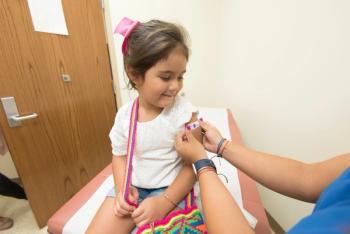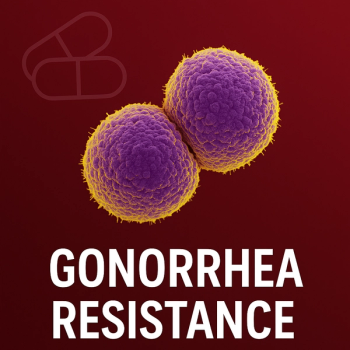
Scientists Warn of Greater Airborne Range for SARS-CoV-2
Over 200 scientists issued alert to medical community that COVID-19 is transmissible over longer distances via smaller aerosolized droplets.
Airborne spread of coronavirus 2019 (COVID-19) can occur via aerosolized microdroplets released during exhalation and talking—in absence of yelling, coughing, sneezing or apparent symptoms—that remain aloft well beyond the recommended 6 feet of social distancing from large droplets, according to 239 scientist signatories of an open letter to "the medical community and relevant national and international bodies," published this week in the journal,
"What we have been concerned about is that, in the effort to control the pandemic worldwide, a lot of effort has been deployed to block the route of transmission by contact—direct or indirect—hand hygiene, and the contamination of surface, and also a lot of advice about large droplet, " Raymond Tellier, MD, MSc, Departments of Medicine, Department of Microbiology and Immunology, McGill University Health Centre, and a contributor to the letter, told ContagionLive®.
"But the effort to block and contain the aerosol route of transmission has been much more averted," Tellier said. "Chiefly because its not been acknowledged as playing a role in the transmission of the virus, except for the exception of the so-called aerosolizing procedures, such as intubation or bronchoalveolar lavage--a diagnostic procedure—or some type of ventilation of the patient with oxygenation."
The 33 scientists who contributed to drafting the open letter, and the additional 206 who signed on in support were drawn from around the globe, and included many from environmental engineering in addition to epidemiology, infectious disease and public health.
Lead authors Lidia Morawska, PhD, MSc, International Laboratory for Air Quality and Health, Queensland University of Technology, and Donald Milton, MD, DrPH, Institute for Applied Environmental Health, University of Maryland School of Public Health, and fellow scientists cite evidence of the virus traveling and remaining viable on aerosolized microdroplets to a distance "much greater than the scale of a typical room," and advocate for preventive measures to mitigate this route of airborne transmission.
They suggested there are several practical measures that can be implemented, such as ensuring sufficient ventilation that is not recirculated and avoiding overcrowding, particularly in public transport and public buildings.
"For example, simple steps such as opening both doors and windows can dramatically increase air flow rates in many buildings," Morawska, Milton, and colleagues indicate.
In addition, they recommend allocation of resources to facilitate such control measures for airborne infection as local exhaust, high efficiency air filtration and germicidal ultraviolet lights.
Despite evidence that such measures can help curb transmission of the virus, the scientists fault public health organizations, including the World Health Organization (WHO) that have not recognized airborne transmission, except for aerosol-generating procedures performed in health care settings.
"Hand washing and social distancing are appropriate, but in our view, insufficient to provide protection from virus-carrying respiratory microdroplets released into the air by infected people," they state.
Researchers and administrators at the WHO responded to questions about the open letter on the day after it was published, in a press conference that had been previously scheduled. Tedros Adhanom Ghebreyesus, PhD, WHO Director-General, indicated that there have been discussions with many of the letter signatories over several weeks preceding the publication.
"We acknowledge these emerging evidence in this field, as in all other fields regarding the COVID-19 virus and pandemic, and, therefore, that we have to be open to these evidence and understand the implications regarding the modes of transmission and also regarding the precautions that need to be taken," Ghebreyesus said.
Soumya Swaminathan, MD, WHO Chief Scientist, emphasized the challenge, however, in considering new studies and findings, and formulating appropriate and timely recommendations.
"When you're in an emergency situation, that we are, and when the science is constantly changing—on a daily basis almost, we review, some days up to 1000 publications, the average is about 500 new publications a day," Swaminathan said. "So, there's a huge amount of new data that's been put out; not all of it is of good quality. It needs to go through peer review, and that takes time."
The authors and supporters of the open letter seemed to have anticipated that there would be some deliberation, if not delay in acting on their recommendations, and had offered this observation, in the letter.
"The evidence is admittedly incomplete for all the steps in COVID-19 microdroplet transmission, but it is similarly incomplete for the large droplet and fomite modes of transmission," they wrote. "The airborne transmission mechanism operates in parallel with the large droplet and fomite routes that are now the basis of guidance."
Following the precautionary principle, investigators stressed they must address every potentially important pathway to slow COVID-19.
"So, what we're aiming at really is just to ensure that you have a comprehensive approach to block all the routes of transmission," Tellier commented. "Certainly you can achieve control of the infection with blocking large droplet and direct contact, and if you partially block aerosol, that will kind of work over time.
"But we think that you can still avoid many infections that have occurred, and that you can dampen the curve even faster, if you really go the extra mile of blocking the aerosol route," he said.
Newsletter
Stay ahead of emerging infectious disease threats with expert insights and breaking research. Subscribe now to get updates delivered straight to your inbox.




























































































































































































































































































